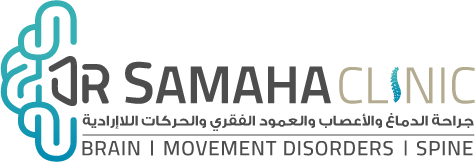ان ورم العصب السمعي بالأغلب هو ورم حميد يصيب عصب الأذن الداخل إلى جذع الدماغ عبر القناة السمعية الداخلية ويشترك في القناه السمعية الداخلية عصب القوقعة وهو المسؤول عن السمع وعصب الاتزان (القنوات النصف هلالية)، والعصب السابع وهو العصب الحركي المغذي لعضلات وحركة الوجه عند حدوث الورم وهو عادة يصيب عصب الاتزان ( Vestibular Nerve) في داخل القناة السمعية العظمية الداخلية بقاع الجمجمة.
عند نموه وازدياد حجمه فانه يضغط على الأعصاب المشاركة له بالقناة فيؤدي إلى طنين بالإذن وضعف متزايد بالسمع، ونادراً ما يؤدي ضعف العصب السابع لأنه الأكثر مقاومه للضغط علية. وعند ازدياد حجم الورم وبروزه من داخل القناة الى داخل الجمجمة فانه يضغط على جذع الدماغ مما قد يؤدي إلى أعراض الضغط على جذع الدماغ ومنها عدم الاتزان وضعف عضلات البلع.
في حال ازدياد حجم الورم أكثر فانه قد يضغط على جذع الدماغ بقوة مما قد يغلق مجاري السائل الشوكي الدماغي وحدوث الاستسقاء الدماغي الانغلاقي ( Obstructive Hydrocephalus )
قد يحدث استسقاء دماغي اتصالي نتيجة إفراز الورم لمادة البروتين يصيب الورم كافة الأعمار. وبمعظم الحالات لا نعرف السبب ولكن هناك أسباب وراثية بالقليل من الحالات وقد تؤدي إلى حدوث الورم بالعصب السمعي بالناحيتين اليمنى واليسرى وبالأعصاب القحفية وأعصاب الحبل الشوكي والأعصاب بالأطراف يتلخص العلاج لهذا الورم بإجرائيين، الاستئصال بالجراحة المجهرية للورم أو المعالجة بالجراحة الشعاعية بالجاما نايف بدون جراحه الجراحة المجهرية للاستئصال الجراحي للورم.
تتم هذه الجراحة بإخضاع المريض للتخدير العام وإجراء جرح خلف الأذن وفتح الجمجمة بفتحة صغيرة واستئصال الورم كلياً أو جزئياً باستخدام المجهر. إن الاستئصال الكامل للورم هو هدف رئيسي ولكنه قد يؤدي إلى فقدان بقايا السمع إذا كانت موجودة والأخطر حدوث ضعف (شلل) بالعصب السمعي مما قد يؤدي إلى شلل عضلات الوجه والتواء الفم وضعف الجفون وعدم إغلاق العين مما قد يتسبب بتقرح العين وفقدان البصر. ولذا فإننا نفضل معالجة الورم بواسطة الجاما نايف بدون جراحه.
وقد أصبحت الجراحة المجهرية وبشكل عام مقصورة على الأورام الكبيرة والتي يبلغ قطر الورم أكثر من 4 سم أو بحالات أعراض ضغط جذع الدماغ. وفي هذه الحالات نجري استئصال جزئي للورم لتصغير حجمه قدر الإمكان ورفع الضغط عن جذع الدماغ وذلك للتقليل من احتمال حدوث المضاعفات وخاصة ضعف العصب السابع ونعالج بقايا الورم بواسطة الجراحة الشعاعية المصوبة بالجاما نايف
الجراحة الشعاعية المصوّبة بالجاما نايف
عند اكتشاف الورم فإننا نقيس قطر الورم وحجمه وامتداده. وفي حال ان قطر الورم 4 سم أو اقل فإننا نخيّر المريض بين الاستئصال الجراحي بالجراحة المجهرية أو قتل الورم بمهده بواسطة الجراحة الشعاعية المصوّبة بالجاما نايف بدون تخدير وبدون جرح وبدون نزف وبدون اقامه بالمستشفى للأكثر من يوم واحد. وتصل نسبة النجاح بالسيطرة على الورم بعد قتلة بمهده بداخل الدماغ إلى 92 % سواءً بانكماش وذوبان الورم أو تحويله إلى كتله ساكنه ميتة ومحنطة.
وتتم هذه المعالجة بتثبيت جهاز الجراحة المصوّبة (الستيريوتاكتيك) على رأس المريض باستخدام التخدير الموضعي والمريض بكامل وعيه ونجري تصويراً ملوّناً للدماغ ونحدد الحدود الخارجية للورم وإحداثيات الورم بدقة متناهية وبنسبة خطأ لأقل من 0.25 ملم. نوجه أشعة الجاما نايف المصوبة والقاتلة للورم دون احداث أية أضرار للأنسجة المحاذية للورم. وبعد الانتهاء من إعطاء الجرعات العلاجية المحددة والمدروسة بدقه متناهيه، نقوم بإزالة جهاز الستيريوتاكتيك عن رأس المريض ويستطيع مغادرة المستشفى بمساء يوم المعالجة والعودة الى عمله المعتاد باليوم التالي أو السفر الى بلده إذا كان قادماً من الخارج اما إذا كان الورم كبيرا وقطره أكثر من 4 سم، او هنالك أعراض ضغط على جذع الدماغ، فإننا نوصي للمريض بإجراء استئصال جزئي للورم بالجراحة المجهرية وذلك لتجنب مضاعفات الاستئصال الكلي للورم ومنها ضعف العصب السابع وبعد تعافي المريض من الجراحة المجهرية بحوالي الشهر نقوم بمعالجة بقايا الورم بواسطة الجراحة الشعاعية المصوّبة بالجاما نايف

